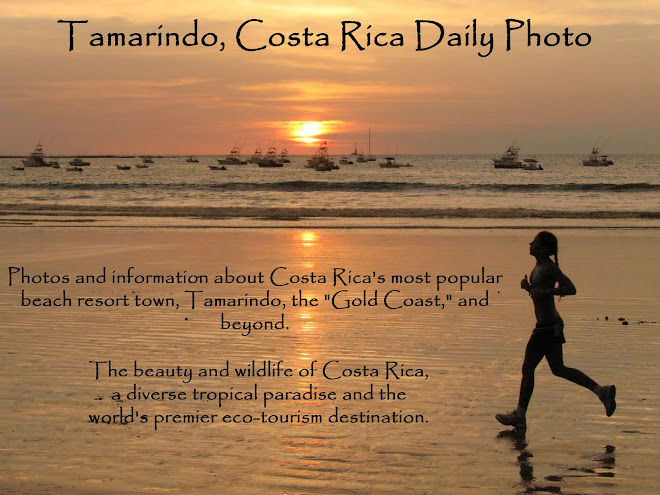 Scientists have just discovered a new species of crab 50 miles off the coast of the Nicoya Peninsula, where Tamarindo is located. I do not have a photo of the new crab, so I am using this photo of a local crab to illustrate this discovery, in part because of the key role of the new crab's front claw, which is also prominent in the photo of this crab.
Scientists have just discovered a new species of crab 50 miles off the coast of the Nicoya Peninsula, where Tamarindo is located. I do not have a photo of the new crab, so I am using this photo of a local crab to illustrate this discovery, in part because of the key role of the new crab's front claw, which is also prominent in the photo of this crab.The new species of crab was discovered living 1,000 meters deep in the ocean, near vents that release hydrogen sulfide and methane gas into the ocean floor. Using these gasses, the crabs cultivate bacteria to grow on their front claw, then they have an appendage that lets the eat the bacteria from their claw.
The new species has been named kiwa puravida. Pura Vida is the national slogan of Costa Rica. It means "pure life" and is used much like Hawaiians use "aloha." The new crab is only the second type of yeti crab species ever discovered, following the 2005 discovery of the other type of yeti crab west of Easter Island in 2005.
The discovery of kiwa puravida was made through the cooperative studies of scientists from the University of South Carolina, University of Oregon, and New Zealand National Institute of Water and Atmospheric Research. This collaboration is an example of how Costa Rica attracts biologists from all over the world because of its unique and diverse land and marine ecology and its support for the environment.
My niece is getting her Ph.D. in marine biology at the University of California at Santa Barbara. She has made made discoveries and published scientific research papers regarding sea urchins. She has also studied sea turtles around the world. I know she will help make the world a better place in the future.
This week we have photos of the fall colors of Cape Breton Island, Nova Scotia on our Viva la Voyage travel photo site.

Very interesting information today. I love it.
ReplyDeleteThey really are fascinating little creatures, it's so exciting when they make new discoveries like this. Who know what else is down there!
ReplyDeleteIt always amazes me that we have so much to learn about our own planet!
ReplyDeleteLike Jarart, I am surprised that discoveries like this are still being made.
ReplyDeleteThis is a pretty fascinating discovery. I think it's terrific, and I also admire your niece and her work.
ReplyDelete